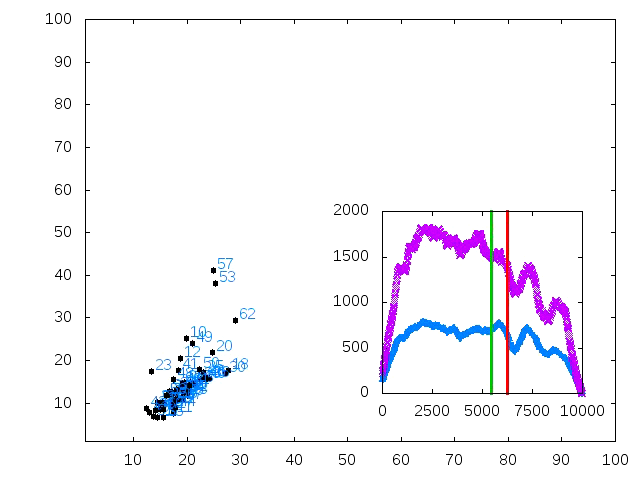Hoàng Anh Phan
15 avril 2010
Le paradigme pair-à-pair (ou P2P, pour peer-to-peer) soppose au paradigme client-serveur . Dans un système pair-à-pair dont les utilisateurs partagent un ensemble de ressources, telles que des fichiers ou des ressources de calcul, tous jouent le même rôle. En particulier, chaque utilisateur peut agir comme serveur pour certains pairs, et comme client pour dautres. Plusieurs méthodes de publication et de recherche de ressources ont été proposées pour les systèmes P2P. Parmi ces propositions, les tables de hachage distribuées (ou DHT, pour Distributed Hash Table) se basent sur un plongement des ressources et des utilisateurs dans un même espace métrique, appelé espace des clés. Cette espace possède une structure permettant le routage, sur lequel peut construire les fonctions de publications et de recherches.
En effet, les réseaux P2P peuvent être utilisés comme support de diffusion multimédia. La fonctionnalité de multicast nayant pas encore été déployée à grande échelle dans lInternet au niveau IP, plusieurs propositions visent à promouvoir le déploiement de procédures de multicast au niveau applicatif, par exemple dans un réseau logique P2P.
Je parlerai dans un premier temps de la mise en marche du protocole P2P D2B : gestion de la dynamicité du réseau, des joints et départs en même temps, de la tolérance aux pannes. Ensuite, je présenterai de trois méthodes déquilibrage de charge dans les réseaux P2P basés sur les graphes de De Bruijn. Enfin, je décrirai un algorithme multicast: Tree-Farm, basés sur lensemble des arbres nœuds intérieurs disjoints. Nous avons montré que, dans le cas des systèmes P2P utilisant la topologie des graphes de De Bruijn, Tree-Farm atteignait une meilleure bande passante (pour un taux de perte nul) que lalgorithme BFS utilisant un seul arbre multicast enraciné en la source ou que lalgorithme PrefixStream [L. Viennot et A. T. Gai – ICON2006].
Le paradigme pair-à-pair (ou P2P, pour peer-to-peer) soppose au paradigme client-serveur . Dans un système pair-à-pair dont les utilisateurs partagent un ensemble de ressources, telles que des fichiers ou des ressources de calcul, tous jouent le même rôle. En particulier, chaque utilisateur peut agir comme serveur pour certains pairs, et comme client pour dautres. Plusieurs méthodes de publication et de recherche de ressources ont été proposées pour les systèmes P2P. Parmi ces propositions, les tables de hachage distribuées (ou DHT, pour Distributed Hash Table) se basent sur un plongement des ressources et des utilisateurs dans un même espace métrique, appelé espace des clés. Cette espace possède une structure permettant le routage, sur lequel peut construire les fonctions de publications et de recherches.
En effet, les réseaux P2P peuvent être utilisés comme support de diffusion multimédia. La fonctionnalité de multicast nayant pas encore été déployée à grande échelle dans lInternet au niveau IP, plusieurs propositions visent à promouvoir le déploiement de procédures de multicast au niveau applicatif, par exemple dans un réseau logique P2P.
Je parlerai dans un premier temps de la mise en marche du protocole P2P D2B : gestion de la dynamicité du réseau, des joints et départs en même temps, de la tolérance aux pannes. Ensuite, je présenterai de trois méthodes déquilibrage de charge dans les réseaux P2P basés sur les graphes de De Bruijn. Enfin, je décrirai un algorithme multicast: Tree-Farm, basés sur lensemble des arbres nœuds intérieurs disjoints. Nous avons montré que, dans le cas des systèmes P2P utilisant la topologie des graphes de De Bruijn, Tree-Farm atteignait une meilleure bande passante (pour un taux de perte nul) que lalgorithme BFS utilisant un seul arbre multicast enraciné en la source ou que lalgorithme PrefixStream [L. Viennot et A. T. Gai – ICON2006].

